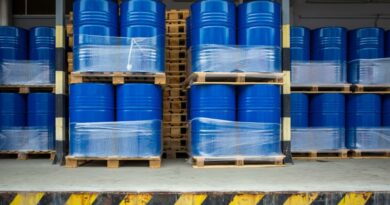How to choose linoleum
Among the variety of floor coverings, linoleum is considered the most popular, versatile and affordable. What should you pay attention to when choosing this finishing material?
Decoding of marking
All models are marked with two numbers. The first indicates the class of wear resistance:
- household – 2, used in residential premises and small offices;
- semi-commercial – 3, fits in offices, beauty salons, boutiques;
- commercial – 4, made of dense PVC. Differs in special wear resistance and more expensive cost. It is used in premises with high traffic: shopping centers, entertainment complexes, medical and educational institutions.
The second informs about what kind of load linoleum can withstand:
- minimum;
- normal;
- high;
- very high.
Types of linoleum
There are several varieties of it, depending on the materials used in the production:
- Natural – premium. The composition contains components of vegetable origin – oils, resins, dyes, wood and cork flour. Jute fabric is taken as a basis. Environmentally friendly natural raw materials are hypoallergenic, therefore, suitable for a children’s room or bedroom. Among other advantages, it is worth noting bactericidal qualities, resistance to UV rays, abrasion, and inflammation. The disadvantages are high cost, fragility and lack of moisture resistance.
- PVC (polyvinyl chloride) – has a fabric or non-woven fiberglass backing. Consists of one or more layers with dielectric and antistatic properties. A huge palette of colors and patterns allows it to be used in any residential and non-residential premises. From the disadvantages, we single out the sensitivity to temperature extremes and exposure to the influence of chemicals. Service life from 7 to 20 years.
- Relin is a rubber two-layer made of synthetic and natural rubber. Available in tile and roll form. Indispensable for industrial, sports and medical facilities. Safe for the environment. Frost-resistant, antistatic, wear-resistant, has good sound and heat insulation. The presence of toxic substances interferes with installation in residential areas.
- Glyphthal – made by covering the canvas with alkyd resin. Differs in elasticity, increased heat and sound insulation properties, decorative shine. Installation technology is more complex due to the tendency to shrinkage, brittleness and cracking. To prevent deformation and creases, it must first be kept at room temperature.
- Colloxylin – baseless thin, made in one layer of nitrocellulose. Due to the tendency to inflammation, it is not recommended for use in childcare facilities and at home. Rapid aging leads to brittleness of the bends. Positive features – elasticity, moisture resistance, smooth surface, variety of shades.
Selection Tips
- a pungent smell indicates the content of harmful additives and low quality;
- the pattern along the entire length must be clear and uniform;
- make preliminary measurements of the object, the width should have a margin for trimming, fitting. Don’t forget about ledges, openings and niches;
- roll out the roll and carefully examine it for physical defects;
- check the labeling and ask the seller to show the hygiene certificate;
- when purchasing, require that the entire footage is from one batch.
Successful purchases and easy repairs!


